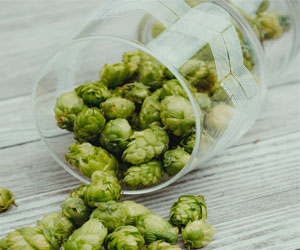


Nurturing Your Skin And The Planet

In an era marked by growing environmental awareness and a desire for healthier living, green skincare has emerged as a significant trend. This eco-conscious approach to skincare goes beyond beauty; it aims to protect both your skin and the planet. In this article, we'll explore the principles of green skincare and why it's becoming a popular choice for conscientious consumers.
Eco-Friendly Ingredients: Green skincare prioritizes the use of eco-friendly, natural, and sustainable ingredients. This means avoiding harsh chemicals and opting for plant-based, organic, and cruelty-free components that are kind to the environment.
Reducing Carbon Footprint: Many conventional skincare products are manufactured with extensive energy consumption and produce large carbon footprints. Green skincare companies often implement sustainable manufacturing practices, use renewable energy sources, and reduce carbon emissions to mitigate their environmental impact.
Biodegradable Packaging: Green skincare products are packaged in eco-friendly containers that are either biodegradable or recyclable. These efforts aim to reduce the vast amounts of plastic waste that end up in our oceans and landfills.
Transparency: Green skincare brands tend to be more transparent about their ingredients, sourcing, and production methods. This transparency empowers consumers to make informed choices about the products they use.
Toxin-Free Formulas: Many mainstream skincare products contain potentially harmful chemicals, such as parabens, phthalates, and sulfates. Green skincare, on the other hand, avoids these toxins and focuses on safer, more natural alternatives.
Holistic Approach: Green skincare often takes a holistic approach to beauty. It emphasizes that what goes on your skin can affect your overall well-being. It encourages mindfulness about the products you choose and their potential long-term effects.
Gentle On Sensitive Skin: Green skincare is typically gentle on sensitive skin. Natural ingredients and fewer harsh chemicals reduce the likelihood of skin irritations, allergies, and breakouts.
Efficacy And Results: Many people believe that natural products are less effective than their chemical-laden counterparts. However, green skincare proves otherwise, with numerous natural ingredients known for their therapeutic and rejuvenating effects.
Supporting Ethical Practices: Green skincare often supports ethical practices, such as fair trade and sustainable farming. By buying these products, consumers contribute to a more equitable global economy.
Inspiring Sustainable Lifestyles: The green skincare movement isn't just about products; it inspires sustainable lifestyles. Choosing green skincare encourages conscious consumerism and a greater respect for the environment.
As we become more aware of the environmental challenges our world faces, it's clear that green skincare is not just a trend but a way of living that benefits both individuals and the planet. By embracing green skincare, you can nurture your skin with clean, safe, and effective products while also taking steps to reduce your environmental footprint.
In a world where personal well-being and environmental conservation are of paramount importance, green skincare is more than a cosmetic choice; it's a commitment to healthier, more sustainable living. So why not make the switch to green skincare and be a part of a movement that promotes beautiful, healthy skin and a cleaner, greener planet? Your skin and the Earth will thank you for it.
The Art And Science Of Brewing
 Another crucial aspect of beer craftsmanship is quality control. Craftsmen continually monitor their brews throughout the fermentation and conditioning stages, ensuring consistency and flavor stability. They understand that a small deviation in the brewing process can result in a vastly different beer, and maintaining the intended flavor profile is paramount.
Another crucial aspect of beer craftsmanship is quality control. Craftsmen continually monitor their brews throughout the fermentation and conditioning stages, ensuring consistency and flavor stability. They understand that a small deviation in the brewing process can result in a vastly different beer, and maintaining the intended flavor profile is paramount.
In the craft beer movement, beer craftsmanship goes beyond the brewing process. It extends to branding, marketing, and presentation. Craft breweries often take pride in unique packaging, labels, and taproom aesthetics, offering consumers a complete sensory experience that complements the liquid inside the bottle or glass.
Craftsmen also embrace innovation. They experiment with new ingredients, techniques, and styles, pushing the boundaries of what beer can be. This spirit of innovation has led to the creation of entirely new beer categories, such as sour ales and fruit-infused brews, expanding the palate of beer lovers.
Beer craftsmanship is a blend of tradition, science, and artistry that elevates brewing from a mere beverage production to a true craft. The dedication to sourcing the finest ingredients, the mastery of brewing techniques, and the passion for creating exceptional flavors are all facets of the craftsmanship that defines the world of beer.


Unearthing Value In Vintage And Thrifted Finds
 Unique Finds: Secondhand treasures are unique and distinct from mass-produced, contemporary goods. Vintage items often feature designs, craftsmanship, and aesthetics that are no longer readily available in modern markets.
Unique Finds: Secondhand treasures are unique and distinct from mass-produced, contemporary goods. Vintage items often feature designs, craftsmanship, and aesthetics that are no longer readily available in modern markets.
Quality Craftsmanship: Many secondhand items were created during eras when quality and durability were highly valued. These pieces often exhibit superior craftsmanship, making them appealing to those who appreciate well-made goods.
Environmental Consciousness: Secondhand treasures align with eco-conscious lifestyles. By buying used items, consumers reduce the demand for new manufacturing and help minimize waste and carbon emissions.
Historical And Cultural Significance: Secondhand treasures carry history and cultural significance. Each item has its own story and represents a slice of the past, offering a tangible connection to bygone eras.
What Can Be Found
The variety of secondhand treasures is astounding. These items span numerous categories, including:
Clothing: Vintage clothing, including dresses, suits, and accessories, allows wearers to showcase unique and timeless style.
Furniture: Secondhand furniture pieces, such as mid-century modern chairs, antique tables, and vintage cabinets, add character and functionality to homes.
Collectibles: Vintage toys, records, antique books, and rare coins are sought-after collectibles that capture nostalgia and historical value.
Exploring The World Of Embroidery Stitches
 French Knot: A highly decorative stitch that creates raised, textured dots. These knots can be used for flowers, eyes, or other small, ornamental details.
French Knot: A highly decorative stitch that creates raised, textured dots. These knots can be used for flowers, eyes, or other small, ornamental details.
Chain Stitch: A looping stitch that forms a chain-like line. It's versatile and can be used for both lines and filling areas, creating a textured, rope-like appearance.
Feather Stitch: This stitch resembles the delicate fronds of a feather, with stitches on either side of a central line. It is often used to depict leaves, vines, or other organic elements.
Bullion Knot: A stitch that creates a raised, coiled effect. It's perfect for floral and three-dimensional embroidery work, adding depth and dimension.
Embroidery In Culture And Tradition: Regional Stitches
Different cultures around the world have their unique embroidery stitches and styles, often reflecting the traditions, values, and artistic sensibilities of their communities.
Sashiko (Japan): Known for its geometric, repetitive patterns, sashiko uses running stitches to create designs that are both decorative and functional. It's often used for mending and reinforcing fabric.
Crewelwork (England): This traditional embroidery style employs wool threads and intricate stitches to create detailed designs, often depicting pastoral scenes and floral motifs.
Hedebo (Denmark): Characterized by its delicate cutwork and intricate whitework embroidery, Hedebo is a reflection of Danish needlework traditions, often used for table linens and clothing.






The Secrets To Healthy Skin And Hair
 Aloe Vera: Often referred to as the "plant of immortality," aloe vera is a powerful natural ingredient for skin and hair. It contains vitamins, minerals, and enzymes that soothe and hydrate the skin, making it an effective remedy for sunburns and irritations. Aloe vera is also known to promote hair growth and reduce dandruff.
Aloe Vera: Often referred to as the "plant of immortality," aloe vera is a powerful natural ingredient for skin and hair. It contains vitamins, minerals, and enzymes that soothe and hydrate the skin, making it an effective remedy for sunburns and irritations. Aloe vera is also known to promote hair growth and reduce dandruff.
Coconut Oil: Rich in fatty acids and vitamins, coconut oil is a beloved ingredient for both skin and hair care. It provides intense moisturization, leaving skin soft and supple, and helps with hair conditioning and preventing split ends.
Honey: Honey is a natural humectant, meaning it helps the skin retain moisture. Its antibacterial properties make it effective in treating acne, while its antioxidants combat signs of aging.
Shea Butter: Shea butter is a skin superfood. It's packed with essential fatty acids and vitamins that provide moisture and aid in skin repair. It's particularly useful for dry and sensitive skin.
Green Tea: Green tea is rich in antioxidants known as polyphenols, which help combat free radicals and inflammation. Consuming green tea or applying it topically can improve skin texture and protect against UV damage.
Avocado: Avocado is a source of healthy fats, vitamins, and minerals. When applied to the skin, it nourishes and revitalizes, leaving it soft and glowing. It can also be used as a hair mask to add moisture and shine.
Vitamin E: Vitamin E is a powerful antioxidant that can protect the skin from damage caused by free radicals and the sun's harmful UV rays. It is commonly found in many skincare products and can also be obtained through diet or supplements.
Jojoba Oil: Jojoba oil closely resembles the skin's natural sebum. It's lightweight and absorbs easily, making it an excellent choice for moisturizing the skin and balancing oil production.
Oatmeal: Oatmeal has soothing and anti-inflammatory properties, making it a popular choice for treating various skin conditions, such as eczema and dryness. It can also gently exfoliate the skin.
A Blooming Start To Your Green Journey
 Planning Your Garden
Planning Your Garden
A well-thought-out plan can make gardening more enjoyable and less overwhelming:
Design: Sketch your garden layout and decide where you want to place different plants. Consider factors like plant height, growth habits, and aesthetics.
Plant Selection: Choose plants that are suitable for your climate, soil type, and level of maintenance. Local garden centers can provide helpful recommendations.
Maintenance Schedule: Create a maintenance schedule that includes watering, fertilizing, and pruning. Regular tasks will help your garden flourish.
Essential Gardening Tools
Every gardener needs a basic set of tools:
Hand Trowel: For digging small holes and transplanting seedlings.
Pruning Shears: To trim and shape plants.
Gloves: To protect your hands from dirt and thorns.
Watering Can Or Hose: For proper irrigation.
Garden Rake And Hoe: For weeding and soil preparation.
Caring For Your Garden
The key to a thriving garden is care and attention:
Watering: Be mindful of your plant's water needs. Overwatering can be as harmful as underwatering. Learn to strike a balance.
Weeding: Regularly remove weeds, as they compete with your plants for nutrients and sunlight.
Fertilizing: Feed your plants with the appropriate fertilizers according to their needs. Some plants thrive with organic options, while others may benefit from slow-release synthetic fertilizers.